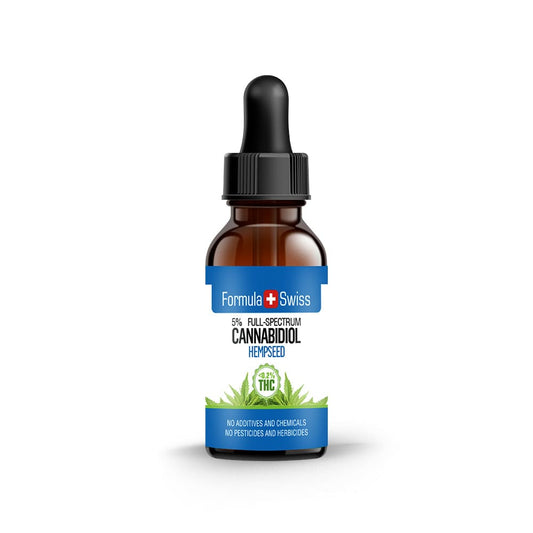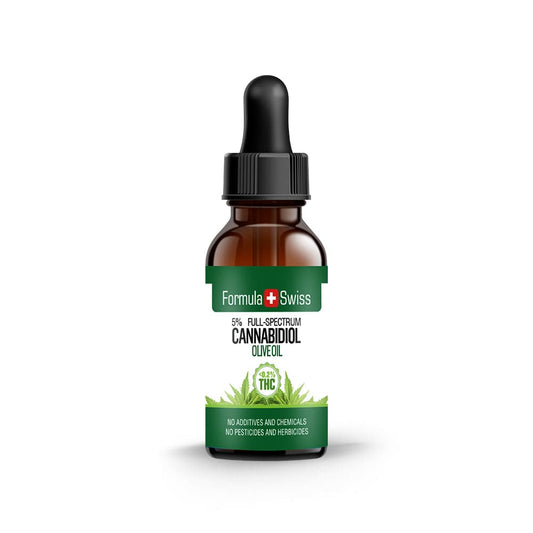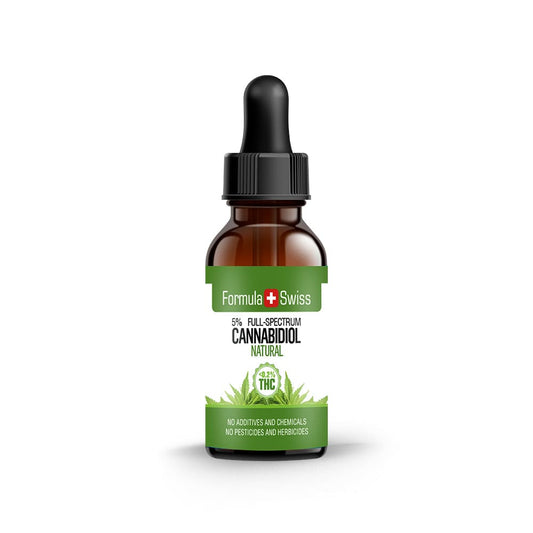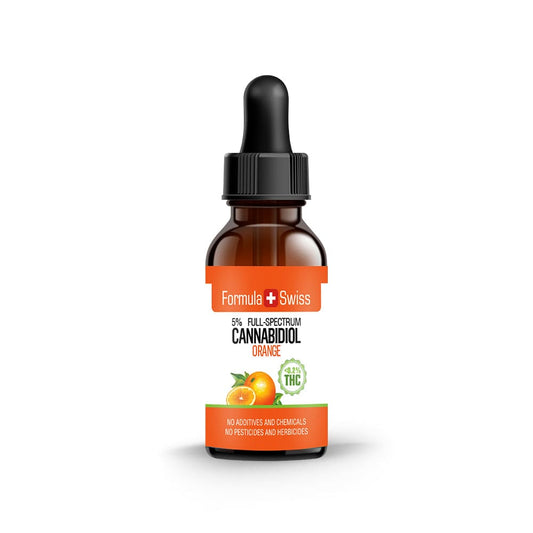Over the past ten years, working in hemp cultivation, CBD production and strain development has taught me something very clear: the true character of a plant is shaped by its terpene profile. These natural compounds are what give each strain its distinctive aroma and flavour, making every variety unique.
Although many people focus mainly on cannabinoids such as CBD or THC, terpenes are just as important in defining the personality of hemp. They determine much of the scent and overall impression that makes one plant different from another.
Here, I’ll share what terpenes are, where they occur, and why they matter in hemp cultivation. These compounds are responsible for the recognisable scents we connect with plants, including hemp.
From the bright, citrus-like notes of limonene to the deep, earthy tones of myrcene, terpenes create a sensory signature that gives each plant its own identity.
Based on my experience, I want to show how terpenes influence the distinctiveness of hemp and cannabis, going beyond simple definitions to underline the role they play in our work at Formula Swiss.
Prefer watching over reading? This video covers the key points from the article:
Save up to 30% when you order your CBD oil today
Key takeaways
- Terpenes are aromatic compounds found in many plants, including hemp, responsible for their distinct scents.
- These compounds play a vital role in the plant's natural defence mechanisms against pests and environmental stressors.
- Over 20,000 different terpenes exist in nature, with more than 100 identified specifically in cannabis plants.
- Common terpenes in hemp include myrcene, limonene, pinene, linalool, and caryophyllene, each offering unique aromatic profiles.
- Terpene profiles can vary based on cultivation methods, environmental conditions, and plant genetics.
- Understanding terpenes is essential for appreciating the complexity and uniqueness of different hemp strains.
This article is provided for informational purposes only and does not relate to any of the products available in our webshop. For more information, please see our full disclaimer.
The importance of terpenes in cannabis
A 2020 review published in Molecules highlighted that terpenes, which are naturally occurring compounds found in many plants including cannabis, are central to the distinct aromas and sensory profiles of different strains.
Beyond their fragrance, terpenes also serve important functions within the plant itself. They contribute to natural protection and help shape interactions with the surrounding environment.
Findings in the Journal of Cannabis Research point out that when terpenes occur alongside cannabinoids, they play a defining role in creating the unique scent and overall sensory character of each strain.

Different combinations of terpenes and cannabinoids give rise to a wide variety of sensory impressions. These range from earthy and grounded to bright and citrus-like, offering each plant its own distinctive profile.
What exactly are terpenes?
Terpenes are hydrocarbons – organic compounds made up entirely of carbon and hydrogen atoms. They are produced by many different plants as well as some insects, such as butterflies and bees. There are believed to be over 20,000 different types of terpene molecules that exist in nature.
In plants like cannabis, terpenes serve several functions beyond just providing aroma. Some investigators believe that many types of terpene molecules help protect plants from insects or predators by producing an odour that repels them.
Order and enjoy up to 30% off your CBD oil purchase
The many types of terpenes found in cannabis
Cannabis contains over 100 distinct terpene molecules, each contributing to the unique aroma and scent profile of individual strains.
Terpenes are aromatic compounds naturally present in a wide range of plants, including cannabis. These compounds are responsible for the diverse and recognisable fragrances that differentiate one strain from another. Beyond their role in scent, terpenes also play functional roles within the plant, supporting its natural interactions with the environment.
Here are the ten most important terpenes in cannabis:
| Terpene | Aroma description |
|---|---|
| Myrcene | Recognised as one of the most abundant terpenes in cannabis, myrcene features an earthy, musky scent with subtle hints of cloves. Read more |
| Limonene | True to its name, limonene carries a lively, citrus-like aroma that adds a zesty, refreshing note to aromatic profiles. Read more |
| Caryophyllene | Distinguished by its bold, spicy, and peppery scent, caryophyllene brings a robust warmth to various aromatic blends. Read more |
| Pinene | This terpene exudes the crisp, fresh aroma of pine needles, often associated with forest-like fragrances. Read more |
| Linalool | Renowned for its gentle, floral fragrance with soft lavender undertones, linalool contributes a soothing scent to aromatic profiles. Read more |
| Humulene | Offering earthy and woody notes with a slightly spicy touch, humulene is often found in hops and complements scent compositions. Read more |
| Terpinolene | A terpene with a multifaceted aroma, blending floral, piney, and herbal elements, terpinolene adds complexity and depth to fragrance combinations. Read more. |
| Ocimene | Known for its sweet, herbal, and slightly woody fragrance, ocimene introduces light, airy notes to aromatic blends. Read more. |
| Bisabolol | With a soft floral aroma reminiscent of chamomile, bisabolol lends a delicate touch to fragrance profiles. Read more. |
| Eucalyptol | Characterised by its cool, minty scent similar to eucalyptus, eucalyptol provides a crisp, invigorating aroma. Read more. |
Terpenes are fragrant compounds found not only in cannabis but also across many familiar plants. Common examples include myrcene, which is also present in mango, limonene in lemons, pinene in pine trees, caryophyllene in black pepper, and linalool in lavender, along with many others.
Each terpene carries its own recognisable scent and adds to the broader aromatic character of the plant.
They play a central role in defining the fragrance and individuality of different cannabis varieties. By paying attention to the terpene composition of a specific variety, it becomes easier to understand and enjoy the subtle differences that make one stand out from another.
Terpenes contribute more than just fragrance, adding depth and layers to the sensory profile of cannabis. Recognising these nuances can be helpful when choosing varieties that suit personal aromatic preferences.

Terpenes: The aromatic compounds in cannabis
Terpenes are organic compounds that are produced by a wide variety of plants, including cannabis. They are responsible for the distinctive smells associated with different strains of cannabis, as well as many other plants. Terpenes play an important role in the plant kingdom by attracting pollinators and repelling predators.
They also help to regulate the plant's metabolic processes and protect it from environmental stresses. In cannabis, terpenes work in concert with cannabinoids like THC and CBD to produce a variety of effects.
While cannabinoids provide the primary psychoactive effects, terpenes can affect the intensity and duration of those effects, as well as provide their unique benefits.
Order CBD oil now and save as much as 30%
The role of terpenes in the plant kingdom
In addition to providing aromas and flavours that attract pollinators like bees or butterflies, terpenes also play an important role in protecting plants from pests and environmental stressors like heat, UV radiation, or drought.
A systematic review published in Frontiers in Microbiology found that some terpenes from medicinal plants exhibit significant antibacterial and antifungal properties, helping to prevent infections and infestations.
Terpenes also take part in a plant’s natural processes, acting as building blocks for compounds such as pigments and hormones. They can influence growth patterns, development, and the way a plant responds to elements like light or changes in temperature.
How terpenes shape the smell, taste and character of cannabis
Terpenes are at the heart of the aromas and flavours linked with different cannabis strains. They define much of the sensory profile and give each variety its own identity. Some of the most familiar terpenes in cannabis include:
- Myrcene: Recognised for its musky, earthy fragrance with herbal or woody undertones.
- Limonene: Noted for its bright, citrus scent that calls to mind lemons and oranges.
- Pinene: Identified by its fresh, pine-like aroma, reminiscent of pine needles.
Beyond their distinct scents, terpenes combine with other natural compounds in cannabis to shape the plant’s overall character. Myrcene can contribute herbal depth, limonene brings a lively citrus note, and pinene adds a crisp, refreshing edge. Together, these elements form the layered sensory qualities that make each strain stand apart.
By learning more about terpene profiles, it becomes easier to appreciate the variety among cannabis strains and to select products that match personal preferences for aroma and character.
The chemical structures of terpenes
Terpenes are organic compounds composed of repeating isoprene units, each containing five carbon atoms. These units can connect in various configurations, leading to a wide array of terpene structures.

How these isoprene units link—be it linear, cyclic, or branched—determines the specific characteristics and functions of each terpene molecule.
The structural diversity of terpenes is shaped by the number of isoprene units they contain. Monoterpenes, for example, are made up of two isoprene units, while sesquiterpenes contain three. This variation influences properties such as molecular weight, boiling point and solubility.
The addition of functional groups such as hydroxyl or carbonyl can influence how terpenes behave, changing their reactivity and the way they interact with other plant-based molecules.
Understanding terpene chemistry is important in areas like aromatherapy, agriculture, and fragrance design. The exact arrangement of atoms within each terpene molecule determines its scent and specific traits. By studying these structures, researchers can discover more refined and purposeful ways to apply terpenes across different industries.
The role of terpenes in cannabis profiles
Terpenes are central to the aroma and sensory qualities of cannabis. Alongside cannabinoids, they contribute to the overall character of each variety, helping define what makes one strain different from another.
A study published in Scientific Reports noted that terpenes can interact with cannabinoids in ways that influence the distinctive sensory properties of cannabis. These interactions add depth and variety to the aromas and impressions associated with different types.
Recognising the presence and balance of terpenes in cannabis can provide useful insight into the diversity of aromatic experiences they create. By comparing terpene profiles, it becomes easier to identify the combinations that align with personal preferences for scent and overall character.
The entourage effect
The entourage effect describes how different natural compounds in cannabis interact, combining to shape the plant’s complete sensory profile.
Terpenes play an important part in this process, as their presence influences how cannabinoids such as CBD and THC express themselves within the plant’s composition. For example, myrcene, one of the most common terpenes, adds to the distinctive personality of certain varieties when it occurs alongside cannabinoids.

This interplay between terpenes and cannabinoids creates a network of relationships that helps define the unique qualities of cannabis strains. Limonene, with its bright citrus aroma, is one example of how a terpene can influence the sensory character of a strain when found together with compounds like THC or CBD. The entourage effect refers to this collective impact, shaping the distinctiveness of each variety.
What is the entourage effect in cannabis?
Examples of how specific combinations influence aroma and character
Different blends of terpenes and cannabinoids can give each cannabis variety its own distinctive qualities.
For example:
- Varieties rich in myrcene (such as Blue Dream) often carry earthy, musky notes with a natural depth.
- Those high in limonene (such as Lemon Haze) tend to feature bright, citrus-like aromas that feel refreshing and lively.
- Varieties containing higher levels of pinene (such as Pineapple Express) are typically recognised for their crisp, pine-like fragrance.
The unique balance of compounds within a plant shapes its overall profile. Learning how these elements interact can help individuals choose varieties that best match their personal preferences for scent and overall character.
Terpenes and ongoing research
Terpenes remain a strong focus of scientific study. Researchers are particularly interested in their role in plant identity and in the way they interact with other natural compounds. Each terpene brings its own signature traits, making them a valuable subject of investigation across multiple fields.
Beta-caryophyllene, with its spicy, pepper-like aroma, has been examined for how it behaves within plant systems. Myrcene, known for its earthy and musky scent, is often discussed in studies looking at how it may influence the overall balance of other compounds in plants.

Limonene, with its sharp citrus fragrance, has also drawn attention in research exploring its role in plant chemistry. While some early studies, including those on animals, have looked into its impact on cellular activity, further investigation is needed to fully understand these processes.
As interest in terpenes grows, they continue to attract research attention for their diverse properties and the ways they contribute to plant-based products. Future studies are likely to deepen our understanding of their potential across various applications.
Personal perspective
For me, terpenes are one of the most fascinating aspects of the cannabis plant. They go far beyond providing fragrance: they give us a window into the plant’s natural chemistry and the reasons why each variety carries its own distinctive character.
Working in hemp production has allowed me to study these compounds closely and to see firsthand how they shape a wide range of products, from aromatic oils to carefully crafted topicals.
Over the years, I’ve come to view terpenes as central to understanding the full personality of hemp and cannabis. Whether it’s the fresh citrus of limonene or the grounded, earthy scent of myrcene, each terpene adds depth and definition to the plant’s profile.
By sharing what I’ve learned, my goal is to highlight the richness of the plant’s natural composition and inspire a deeper appreciation for the diversity within the hemp and CBD world.
Don’t miss out—save up to 30% when you purchase CBD oil today
Frequently asked questions
What are terpenes?
Terpenes are natural aromatic compounds found in many plants, including cannabis, responsible for their distinctive scents.
Where are terpenes commonly found besides cannabis?
Terpenes are abundant in various plants such as citrus fruits, pine trees, lavender, rosemary, and herbs like basil and thyme.
How do terpenes contribute to the aroma of cannabis?
Terpenes shape the unique scent profiles of different cannabis varieties, from citrusy and fruity to earthy, woody, or spicy tones.
Are terpenes used outside of cannabis products?
Yes, terpenes are widely used in the fragrance industry, cleaning products, perfumes, and essential oils due to their aromatic qualities.
How are terpenes extracted from plants?
Terpenes can be extracted through various methods such as steam distillation, cold pressing, or solvent extraction, depending on the plant source and intended use.
Do terpenes degrade over time?
Yes, terpenes are sensitive to light, heat, and oxygen. Over time, exposure to these elements can cause them to degrade, reducing their aromatic intensity.
Are synthetic terpenes available?
Yes, synthetic terpenes are produced in laboratories and are commonly used in fragrances, flavourings, and cleaning products. However, many prefer naturally derived terpenes for their authenticity.
What is the difference between terpenes and cannabinoids?
Terpenes are aromatic compounds responsible for scent and flavour, while cannabinoids are chemical compounds found in cannabis that interact with the body's systems. Both are present in cannabis but serve different roles.
Can terpenes be blended for custom aromas?
Yes, terpenes can be combined to create custom aromatic profiles, which is a common practice in perfumery, aromatherapy, and cannabis product development.
What is the entourage effect in cannabis?






